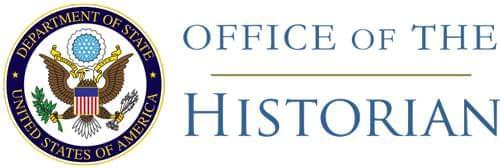58. Memorandum of a Conversation Between the Counselor of the
Australian Embassy (Blakeney) and the
Deputy Director of the Office of British Commonwealth and Northern
European Affairs (Horsey), Department of
State, Washington, June 20, 19551
Washington, June 20, 1955
SUBJECT
- Australian Forces in Malaya
Mr. Blakeney called at his request and said he had
been asked by Canberra to give us a copy of the announcement of the
Cabinet’s decision of June 15 to send Australian forces to Malaya. A
copy of that statement is attached2 as is a supplementary memorandum3 which, Mr.
Blakeney says, summarizes the Australian
rationale for this action. He said he had been instructed to ask for our
reaction to the Australian decision to station these forces (he said
they would amount to one battalion) in Malaya and on the specific use to
which they would now be put, as stated in the second sentence of
paragraph 5 in the second paper attached hereto. He said that his
Government would like to feel they had our support. After an informal
conversation on the subject I said that I would bring his request to the
attention of the proper authorities and get in touch with him in due
course. I asked him, incidentally, whether there had been any formal
decisions or public announcements by any of the three Commonwealth
members concerned as to the decision of the UK, Australia and New Zealand to station a “strategic
reserve” in Malaya. He did not seem to know whether there had been such
a statement.
[Page 111]
[Attachment]
Note From the Australian Embassy to the
Department of State4
Washington, June 20,
1955.
AUSTRALIAN FORCES FOR MALAYA
Supplementary Information
- 1.
- The Australian element of the strategic reserve in Malaya will
be a contribution to the defence of Malaya as an important part
of the Manila Treaty area. Every other member of the Treaty
holds defence forces in readiness in the area.
- 2.
- We recognise the interdependence of the countries of the area
and the need for mutual assistance in combatting the real threat
of Communist expansion which has become increasingly
concentrated on South East Asia. Our forces will cooperate in
deterring aggression.
- 3.
- Although subversion rather than armed aggression is the first
weapon in the Communist armory and is the most immediate danger
to the area, such subversion is backed up by constant threat of
armed intervention. In providing a counter to such armed threat
we are assisting the countries of the area in solving their
internal security problems and, in the case of Singapore and
Malaya, in developing their political institutions free from
external threat.
- 4.
- So far as resistance to armed aggression is concerned the
closeness of Communist forces to Malaya and other parts of the
Treaty area and the increased tempo of modern war make it
essential for a nucleus of defence forces to be in position
before any aggression occurs.
- 5.
- Plans for external defence of Malaya would be frustrated and
the security of the rest of the Manila Treaty area would be
seriously endangered if the internal security of the country
collapsed as a result of the activities of the terrorists. For
this reason Australian forces will with other Commonwealth
forces assist the people of the Federation in suppressing the
terrorists.
- 6.
- It will be clear to the people of Malaya and Singapore that
Australia is concerned only with assisting in the defence of
their national territory as a vital part of the Manila Treaty
area in strict accord with the principles laid down in that
Treaty and in the Pacific Charter. Australia welcomes the
advances towards self-government so far made in Malaya and
Singapore. Australian forces will not play any part in the
internal affairs of Singapore or the Federation.
